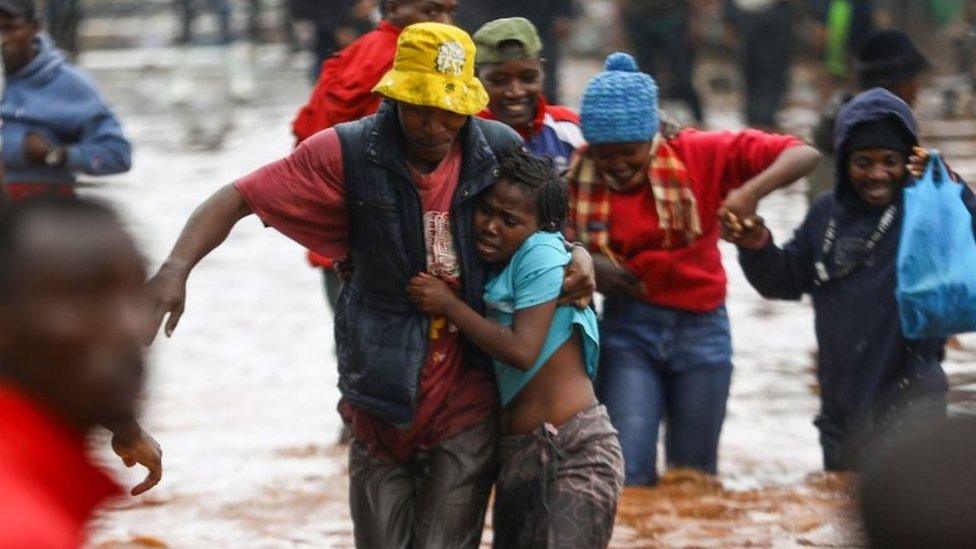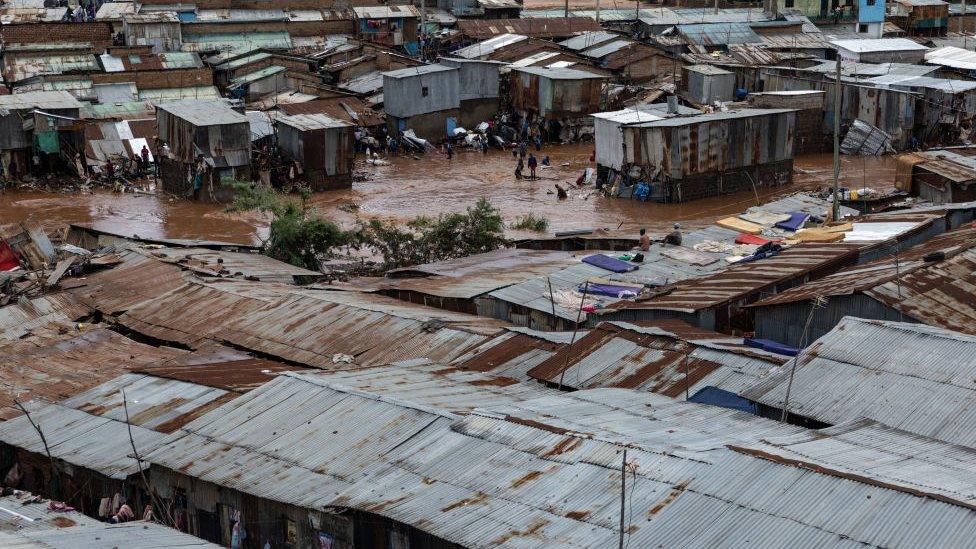Kenya: Floods cause widespread devastation in Nairobi
- Published

The UN says more than 40,000 have been forced from their homes
Roads have turned into rivers in the Kenyan capital Nairobi, as a top official said flooding had "escalated to extreme levels".
Heavy rain has pounded Kenya in recent days, causing widespread devastation.
The UN says that at least 32 people have lost their lives and more than 40,000 have been forced from their homes because of the rain and flooding.
Edwin Sifuna, who oversees Nairobi county, posted footage, external showing an entire neighbourhood flooded.
In the clip, residents can be seen trapped on the roofs of their homes.
"The situation in Nairobi has escalated to extreme levels. The County Government for all its efforts is clearly overwhelmed. We need all national emergency services mobilised to save lives," he said.

Residents of the Mathare slum had been forced to sleep on rooftops overnight
Hundreds of others in Nairobi and nearby areas were marooned by floods following heavy rain overnight.
Local media reported that residents of the Mathare slum had been forced to sleep on rooftops overnight.
Major highways have been submerged by floodwater, causing traffic jams across the country.
"The city is at a standstill because most roads are flooded," Uber driver Kelvin Mwangi told the AFP news agency in Nairobi.
A five-year-old boy who was left stranded by the flooding was rescued by a police helicopter in Yatta, south of Nairobi, on Tuesday.
"The child, visibly shaken by the ordeal after being stranded for quite a long period, was safely rescued and taken to a nearby hospital for care," the Kenya Red Cross said.

A boy was left stranded when flood waters started rising
Wider East Africa has also been badly affected by heavy rain in recent weeks.
Nearly 100,000 people have been displaced in Burundi, while at least 58 people have died in Tanzania.
One of the biggest drivers of heavy rain in East Africa is the Indian Ocean Dipole (IOD).
The IOD - often called the "Indian Niño" because of its similarity to its Pacific equivalent - refers to the difference in sea-surface temperatures in opposite parts of the Indian Ocean.
During a positive phase the waters in the western Indian Ocean are much warmer than normal and this can bring heavier rain regardless of El Niño.
However, when both a positive IOD and an El Niño occur at the same time, as was the case last year, then the rains in East Africa can become extreme.
One of the strongest positive IOD patterns on record coincided with one of the strongest El Niño patterns in 1997 and 1998, with severe flooding reported. These caused more than 6,000 deaths in five countries in the region.
Additional reporting by Chris Fawkes
Related topics
- Published9 April 2024
